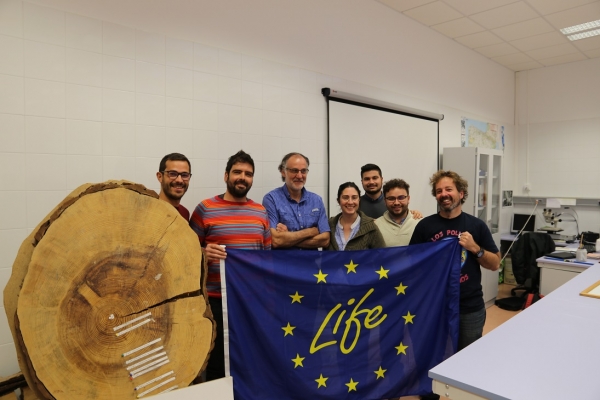The effects of climate change, which increasingly affect citizens' routines, and the sustainability of the planet, arise, basically, from an imbalance in the carbon cycle. This is why a large part of the research community has focused on forests’ carbon sequestering power, as they absorb the carbon present in the atmosphere and incorporate it, through photosynthesis, into their structure, or ground it, through their roots, thus generating carbon sinks.
Sustainable forest management can, therefore, play a role in mitigating climate change. Along this line, Rafael Mª Navarro Cerrillo, a Professor of Forest Engineering at the University of Cordoba, together with the 'Evaluation and restoration of agricultural and forestry systems' research group at said college, are studying the effect that reforestation has on carbon sequestration capacities.
Within the LIFE FOREST CO2 project, this research group focuses on replanting of the Aleppo pine (Pinus halepensis) and black pine (Pinus pinaster), in the eastern area of Andalusia and Murcia, to determine what kind of forestry strategies optimise global C02 sequestration capacities in these forest systems.
In these types of studies the retained biomass is analysed; both the aerial part (trunk and crown) and at the roots of the trees. In this case, however, the UCO also monitors the carbon sequestration capacity of the soil, which often exceeds that of the trees' aerial portions. In this way, a comprehensive understanding of all possible carbon sequestration by the forest system is achieved.
The high densities of these forests have caused growth to stagnate, due to the competition between trees for access to resources (water, light and nutrients), such that their sequestering power also remains stagnant. If no action is taken the outlook is alarming: the forests could stop their carbon sequestration, or they could be lost, due to pests or fires. To address this situation of stagnation, it is proposed to include two types of forestry strategies to control the forests' thickness: clearing programs (modification of denseness) and specific reforestation management methods. After measuring the carbon sequestration rates present in the forests after implementing these strategies, the research group found that the higher the intensity of clearing, the greater the carbon sequestration, due to the reactivation of the growth process. After clearing, the trees' growth increases, absorbing more carbon as a result of the improvement in their growing conditions (increase in the size of the crowns, increase in the foliar mass, etc.), augmenting the tons of carbon per hectare. The increase in light from the reduction of the trees' density affects the soil, favouring the mineralization of organic matter, stimulating biological activity, and increasing its incorporation into the soil.
In addition to the environmental advantages, this project shows how it can economically benefit those companies that must pay for their carbon emissions. Now, when compelled to pay taxes for those emissions, they will be able to opt for these types of methods as a way to balance out the results of their activity and exchange carbon credits. Thanks to the demonstration of how forestry can bolster forest sequestration capacities, both governments and private companies will have strategies to regulate the carbon discharged into the atmosphere and tools against climate change. The ecosystemic benefits resulting from this activity impact society as a whole: they increase biodiversity, reduce the danger of fires, improve the hydrology of river basins, and generate employment in the primary sector, stabilising people in these areas. In short, the power of forests to improve people's quality of life is manifested.
"The LIFE FOREST CO2 project has been financed by the European Union's LIFE program (LIFE14 CCM / ES / 001271). The information included in this article reflects only the opinion of its authors. The European Agency/Commission waives responsibility for use that may be made of the information contained in this article. "


